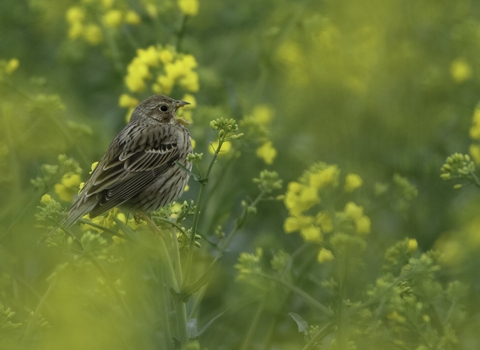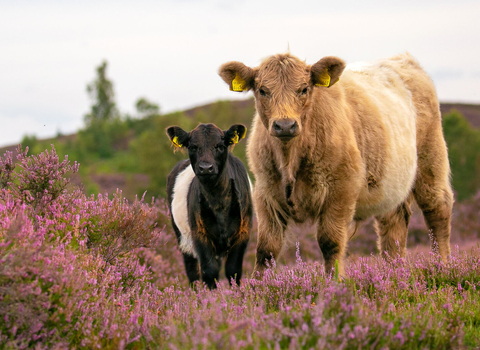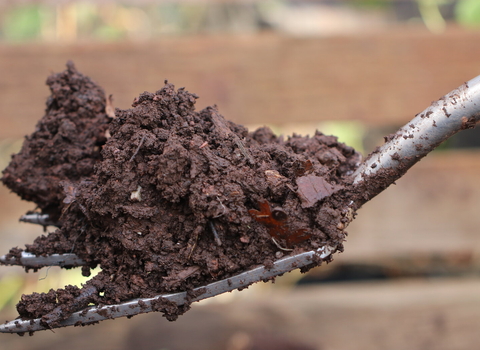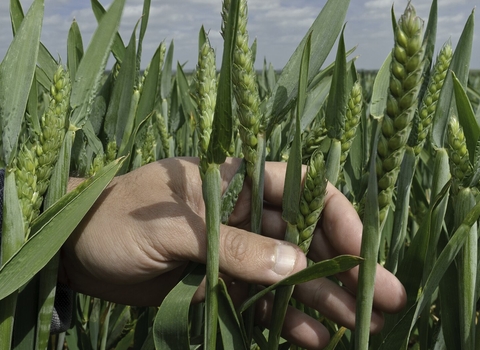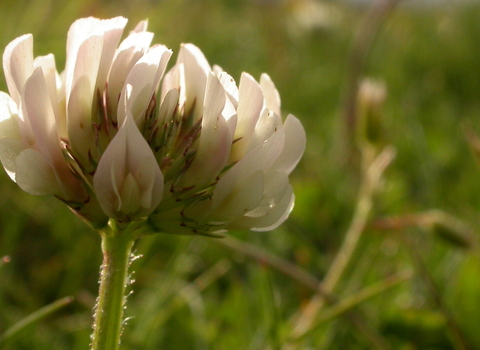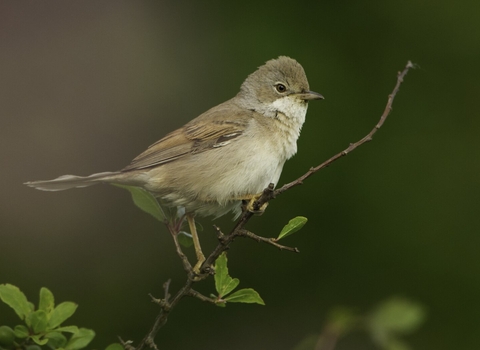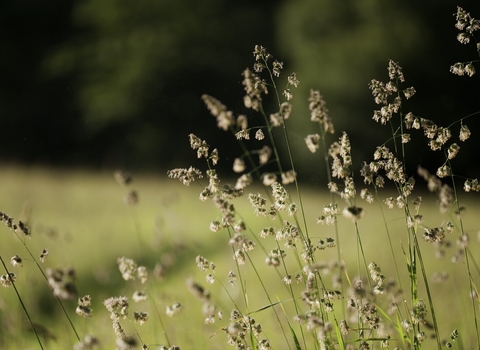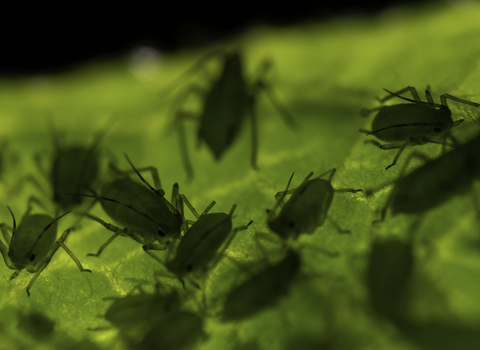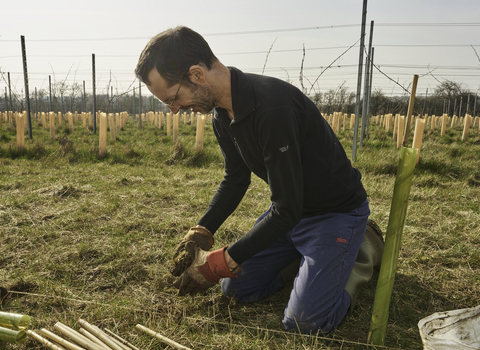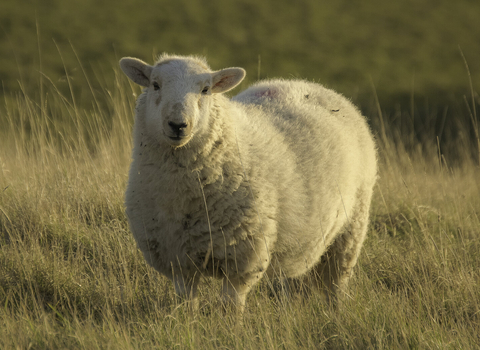Farmland offers a huge variety of different habitats that vary not only between themselves but also from farm to farm. No two farms or fields are the same and each one can support a wealth of different species from the smallest microorganisms up to the largest of our UK predators. Managing these complex environments can be a daunting task and making improvements to restore or enhance habitats can be even more overwhelming. Here we’ve summarised some of the most common habitats you might find in an agricultural landscape and some tips to consider when managing them. If you have any questions about any of the habitats or would like help to develop a management plan, please get in touch.
Contact us about farming advice
General habitat management tips
- Survey the area to get an idea of species inhabiting it. You can do this yourself by using some easy monitoring strategies such as bird and butterfly counts, earthworm counts, plant surveys and hedgerow condition surveys. You can also get in touch with local wildlife groups to ask for help with identification. Doing a baseline survey will help you to monitor the improvements you are making in your farm.
- Creating a 'buffer' around any habitat will help to protect it from agricultural practices, pollution and high stocking densities. This is particularly important around ponds and waterways but also helps to create graduated habitats around hedges and woodlands that can support an array of different wildlife. Buffers are usually areas of longer grasses but can consist of any vegetation from trees and scrub to wildflowers or short grass.
Advice for managing different habitats
Find some general advice on how to care for different types of land below.
Soils
Soil is the one habitat that a farm cannot do without and yet it is also the one habitat that is most commonly overlooked. The difference between dirt and soil is life. The thriving ecosystem beneath our feet is home to a quarter of all living species on earth. It is full of microbes, fungi and invertebrates and without it we wouldn’t be able to produce food or cycle nutrients, carbon and water. A healthy soil is the most valuable asset on your farm as it helps to provide nutrients and water to support healthy plant growth. Improving soil health is also one of the best ways to kick-start biodiversity on your farm by building up the bottom of the food chain you can provide more food and resources for larger species to use.
How to increase your soil health:
- Increase organic matter to feed your soils. This can be done by integrating livestock, using farmyard manure, compost, green manures and/or living mulches.
- Improve your soil structure by increasing the diversity of plants and root structures and reducing tillage. Having healthy living roots in your soils helps increase soil aggregation through fungal and bacterial excretions whilst increasing water carrying capacity making your soils more resilient during droughts and times of stress. This can be done with cover and catch crops, herbal leys, mob grazing and agroforestry.
- Reduce the use of artificial inputs like nitrogen fertilisers and pesticides as these can have negative effects on the biology in your soil.
- Keeping soils covered with living material helps to keep soil alive in between crop growth and reduces soil erosion and nutrient leaching.
To monitor the health of your soil you can use simple earth worm counts as a proxy for soil biology. Earth worms thrive in healthy soils and do wonders for nutrient cycling; the more earth worms you have the healthier your soil is. For a more in depth analysis you can send samples to soil biology labs to get a greater insight into the soil food web you have on your farm.
Hedgerows
Hedgerows are one of the most iconic habitats in the agricultural landscape and can be found in one form or another on most farms in the Warwickshire region. Although hedgerows are manmade, they mimic the wobbly woodland edge habitats that would have been found across historic Britain. They act as wildlife corridors connecting patches of woodland and other biodiversity hotspots so that mammals can travel between them to find new homes and mates. A mix of small and large trees, scrub and flora provide nesting areas, refuges and food sources for an abundance of mammals and invertebrates. The range of plants found provide food sources year-round with sequential flowering and fruiting plants providing vital food for pollinating insects and overwintering birds.
Tips for managing your hedgerows:
- Management of a hedgerow aims to keep intact the succession of flowers and fruits so that there is forage available on at least two thirds of a farm’s hedgerows each year. Management cycles for hedgerows are better on 3 or 4 year rotations but this is highly dependent on the initial management needed. For example, if a hedge has gaps at the bottom, then it may need laying or coppicing to rejuvenate the base. This should then be left un-managed for a number of years before being entered back into a cutting rotation.
- When determining the best place to start your hedgerow management, it is important to do an initial condition assessment of all of the hedgerows on your farm. This can be done using the Healthy Hedgerow condition assessment laid out by the Peoples Trust for Endangered Species “PTES” (https://hedgerowsurvey.ptes.org/healthy-hedgerows-survey) (using their app allows you to take photos and easily assess whilst in the field).
- When you have completed a condition assessment, aim to actively manage a third or less of the total length of hedgerows on your farm each year. This will mean that there is still enough food and shelter available. Cutting your hedgerows as late as you can (ideally February) also means that more food is left for birds over the winter (note however, bird nesting season which extends from March to August inclusive. During this time, cutting should not be undertaken. Bird nesting can also occur outside of these dates, particularly with changes in climate meaning the nesting season is extending, so it is prudent to check hedgerows before managing them to ensure no nesting is taking place).
- Planting a diverse mix of native hedgerow species will help the succession of flowers and fruits throughout the year. If you notice your hedgerows are dominated by a particular species than you can fill in gaps with other native trees to diversify your hedge. When doing any form of planting, always ensure you know the provenance of a species and that they are purchased from a reputable supplier. This helps prevent issues with disease and pests.
- Ensuring a buffer of grassland on either side of your hedge provides a graduated habitat for more species to utilise, such as ground nesting birds, butterflies and small mammals.
- Providing in hedge trees and leaving standing dead wood in your hedge also expands the range of habitats and species catered for.
For more information on hedgerow management, you can visit the Farm Wildlife and CFE websites:
farmwildlife.info/how-to-do-it-5/field-boundaries/hedges/
www.cfeonline.org.uk/environmental-management/managing-hedges-to-benefit-pollinators/
Wildflower (species-rich) meadows and pastures
These areas of abundant grassland have become increasingly rare in the farmed landscape as grasslands have become more improved over time to increase livestock forage and hay production or converted into arable land. Wildflower meadows are, however, one of the most biodiverse habitats that can be found in the UK supporting countless invertebrate species including bees and butterflies as well as rare plants and fungi, ground nesting birds, reptiles and amphibians. There are many types of species-rich grasslands based on soil type, pH, water level and proximity to the coast.
Tips for management:
- Understanding the type of wildflower meadow and the range of plants and mammals within it will help you to develop a management strategy that can maintain or enhance your area. Consider the flowering times and breeding times of birds and mammals and try to minimise disruption during this period.
- Avoid applications of artificial and non-artificial fertilisers as desirable plants prefer nutrient-poor soils.
- Grazing livestock create a diverse sward structure which allows different niches for a more diverse range of fauna to fill.
- Avoid or reduce grazing or cutting at times of the year when plants are in flower or going to seed, or when ground nesting birds may be occupying the area.
- Leaving some taller tussocky areas over winter will provide shelter for insects and small mammals.
Restoring or creating a wildflower meadow can be a long but rewarding process. Preparing the ground by scarifying with at least 50% bare ground, targeting weed issues that may outcompete your wildflower seed and using a seed mix that is right for your soils are all crucial aspects in successful wildflower establishment. Try to source seeds as locally as possible with only native species to improve your chances of success, as these seeds will be more suited to the soils and climate in your area.
Arable crops
Crops are often an overlooked habitat on farms as they are usually monocultures that lack diversity. Stubbles and unharvested areas left after cereal crops can, however, provide food for seed eating birds over winter whilst also providing space for rare arable ‘weeds’ to germinate.
Tips for management:
- Leaving some areas of overwinter stubble or unharvested cereals can be beneficial, even just a strip in a field (ensuring a wide buffer to prevent soil erosion and run off) will provide seed for birds that can be supplemented with seed spreading throughout the winter.
- Leaving small areas of field margins or corners uncropped and cultivated will help to provide space for rare annual plants to flourish.
- Leaving uncropped cultivated areas in the field will provide nesting and foraging sites for endangered farmland birds such as lapwing and skylark. For details of the current conservation status of birds in the UK, please visit the British Trust for Ornithology (BTO) website - www.bto.org/our-science/publications/birds-conservation-concern
- Sowing winter bird seed mixes can help to provide more food for overwintering birds where overwinter stubbles do not suit the rotation on your farm. This also provides more green cover throughout the winter which can help with soil health.
- Under sowing crops can increase green cover for beneficial insects during crop growing time and help to improve soil health.
Ponds
Farmland ponds are important wetland features in the agricultural landscape supporting a wealth of wildlife. Research shows restored ponds can attract twice as many species of birds due to the abundance of insect life found there. Over the years, the numbers of farmland ponds have diminished as they are used less for livestock and irrigation. A healthy network of farmland ponds is vital, especially for amphibians which struggle to move great distances to find new mates and spawning grounds. Restoring and managing your pond can be a great way to boost biodiversity on your land without taking land out of production. Indicators of a good pond are clean water, shallow margins and healthy plant life. This will attract many pollinator species such as bees and hoverflies (some of which need ponds to complete their life cycle), as well as dragonflies and other aquatic invertebrates.
Tips for restoration and management:
- Ponds should have as much sun as possible, however good terrestrial habitat also includes having shrubs and trees, so try to find a balance between the two. Having trees on the northern edge of the pond means the sun from the south will better reach the pond surface.
- Pond management and restoration should take place ideally in October. Young amphibians will have grown enough to leave the pond by this point and nothing will have begun to hibernate in the pond mud. Also, water levels are likely to be a lot lower than later in winter making desilting a much easier task.
- Having ponds of different ages across the farm will provide a greater range of habitats for different species. If you have multiple ponds, try to restore them in different years to create this variation. Taking stock of the variation between your ponds will help you to develop a management plan to maintain diversity.
- Clean water in your ponds is crucial for a healthy ecosystem. Buffering your ponds against agricultural activities to reduce pollution is essential for healthy pond life. This can be done by leaving a strip of grassland around your pond (12m wide). Planting some trees, shrubs or hedgerows also helps to protect against spray drift but be careful not to completely enclose your pond as this will block light from reaching the surface.
- Buffer strips can also help connect an in-field pond to the wider landscape, creating corridors for animals to migrate along without risking wide open spaces in-field. Using a hedgerow, a shelter belt of trees, a beetle bank or pollinator strip can be an excellent way of increasing this connectivity.
- When restoring or creating a pond be sure to make margins shallow (approximately 50-60 cm wide and 5-15 cm deep) and create shelves for deeper areas of the pond.
- Keep an eye out for invasive species that can disrupt the native species and habitats. Also keep an eye on reeds and reed mace that quickly overcome a pond and outcompete other species.
- Fish will predate invertebrates, larva and amphibians, so it is best not to stock your ponds in order to keep a wide range of pondlife. If you do want to have a stocked pond for recreational purposes, then find a balance by leaving other ponds on your land for the use of wildlife.
Waterways
Rivers, streams and ditches are vital lifelines and corridors for wildlife travelling through the landscape. Managing waterways sympathetically can provide homes for a wide range of wildlife and are vital feeding habitats for many species including all UK species of bat, especially Daubenton's bat which specialises in feeding over water.
Tips for management:
- Improving water quality by protecting against pollution and soil erosion is the main way you can help wildlife thrive on your waterways. Wide buffer strips of rough grassland and riparian trees will protect against pollution by soaking up water running from fields into the rivers. This also helps with natural flood management slowing the flow of water into and down rivers.
- Bankside vegetation should have minimal intervention to reduce soil erosion. Strong rooting structures from trees and rough grasslands will help to secure soil. If it is necessary, where possible try to alternate cuts along the water edge to create a varied sward structure which is ideal for a range of animals including small mammals which attract owls and other birds of prey.
- Where rivers and streams are important for fish and shellfish, allow dappled shade to ensure water surface temperature doesn’t get too hot. Keep other areas more open with marginal vegetation to provide varying habitats for invertebrates.
- Remove any invasive species such as Himalayan balsam to prevent domination and spread of the plant.
- Leave dead wood in stream to create more habitats and in water shelter for fish and invertebrates. Leaky dams created by dead wood hanging over water will also help to slow water flow and prevent flooding downstream during times of heavy rainfall.
- Managing features in main waterways requires consent from the Environment Agency, we strongly suggest getting in touch for advice on this process.
For more information: https://freshwaterhabitats.org.uk/
https://farmwildlife.info/how-to-do-it-5/wet-features/streams-and-rivers/
Woodlands
Woodlands are an important habitat both for biodiversity and for carbon capture. They can provide homes for a broad range of the UK’s wildlife with even small copse providing much needed respite from tougher environments in the greater landscape.
Tips for management:
- If you have a large plot of woodland, it is advised that you get a woodland management plan done to ensure it is providing the best for wildlife that it can (https://www.gov.uk/guidance/create-a-woodland-management-plan).
- Be sure to survey for current species to ensure management takes into account their continuing needs and check for specially protected species such as dormice which may require specific management.
- Maintaining or creating a diverse structure to cater for the widest range of wildlife needs by carefully thinning trees. This will allow light to reach the woodland floor stimulating growth which will ensure a good scrub layer, natural regeneration of trees and woodland flora. Creating glades and wavy-edged rides can be a great way of doing this.
- Retaining dead and decaying wood whether fallen or standing provides habitat and food for saprophytic species, as well as holes for nesting birds and bats. Creating dead wood habitats when thinning trees can be an excellent way to provide for these species.
- Provide bird and bat boxes in woodlands that lack suitable trees with holes to enhance roosting and nesting opportunities.
- Ensuring a diverse age range of trees (especially in newer woodlands such as shelterbelts and copses) is important to maintain mature trees and dead wood into the future.
- Retaining wet areas and features within woodlands provides a more diverse range of habitats catering for different species.
- Use native species when replanting areas and try to source locally where possible.
- Buffering the woodland edge with rough grassland and scrub, allowing for a graduated structure, provides ideal habitat for a range of species including many species of butterflies and reptiles.
- Ensuring connectivity within the woodland and with other wildlife habitats by using hedgerows and grassland strips between woodlands, ponds and other distinctive habitats on your land.
For more information: https://farmwildlife.info/how-to-do-it/existing-wildlife-habitats/woodland/
Field corners and areas of unproductive land
These areas on your farm provide a real opportunity to increase your biodiversity. Areas that are difficult to get round with a tractor or that run particularly wet and don’t offer much yield or grazing potential can be taken out of production. These can then be used for pollen and nectar mixes, wild bird seed crops, planting woodlands or orchards, leaving areas to go to scrub or creating ponds or scrapes. These areas can increase the biodiversity which can increase your levels of natural pest management, boost your pollinator numbers, and capture water running from fields helping to improve natural flood management, reduce nutrient leaching and soil erosion.
If you would like some help to decide what the best options are for your field corners, please get in touch with our agricultural advice team here.
Farming practices for nature
Farming together with nature helps to provide habitat for a huge number of species at the same time as producing high quality food. It allows nature to thrive both within and around productive areas. With a reduction in BPS payments farmers are looking for other ways of securing their business profitability. A study done by the Nature Friendly Farming Network shows that without financial inputs from subsidies, the most profitable way of farming is to reduce external inputs and farm alongside nature.
Regenerative agriculture is a growing farmer led movement that uses nature to underpin farming and revitalize soils. This bottom-up approach helps to restore the start of the food chain, the microfauna, fungi and bacteria that live in our soils. From here the whole food web begins to benefit, restoring natural ecosystem processes that help biodiversity to thrive with a bonus of helping to sequester carbon in our soils. There are 5 principles behind regenerative agriculture:
- Do not disturb the soil: soil contains a wide web of fungal hyphae, holes from burrowing worms and rotted roots, aggregation around bacteria and root structures that all help to aerate the soil. This oxygenates the soils allowing life to thrive and water infiltration to improve meaning more water can be stored in the ground. This is useful in both periods of heavy rainfall, to stop fields becoming waterlogged, but also in times of drought where roots have access to a bigger reserve of water in the soils.
- Keep the soil surface covered: the idea behind this principle is to keep your soil on your land. Keeping cover on the soil all year round means less exposure for soil and nutrient run off during wetter periods and less scorching and wind erosion during dryer times.
- Keep living roots in the soil: keeping your soil alive means the beneficial fungi and bacteria can continue thrive ready for your next crop. These ready placed symbionts will then be hugely beneficial for your following crop providing nutrients and water which vastly reduce your need for extra inputs.
- Grow a diverse range of crops: diversity is key in any ecosystem, the more diverse your farmland is the more your ecosystem will thrive. Increasing your crop diversity improves your soil health by increasing the variation in bacteria and fungi that serve the bottom of the food chain. Using methods such as intercropping, under sowing and cover crops can improve diversity within your crop. Additionally using pollinator strips and beetle banks can improve diversity around your crops.
- Bring grazing animals into the rotation: this allows land to take a break from cropping whilst further improving soil health and continuing to make a profit from the area. Planting a species-rich ley after taking a crop not only improves the diversity and structure in your soils but also allows you to take advantage by grazing livestock on this area. The livestock then move around spreading manure and naturally fertilizing the land, increasing organic matter and nitrogen in the soils.
Regenerative farming is a flexible approach. It looks different on every farm and can be followed in whichever way works for your business. This means it can incorporate a multitude of other farming practices that can help to increase the biodiversity of your farm, some of which are explained below.

